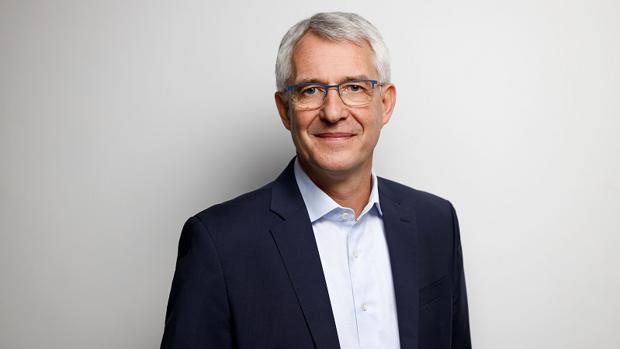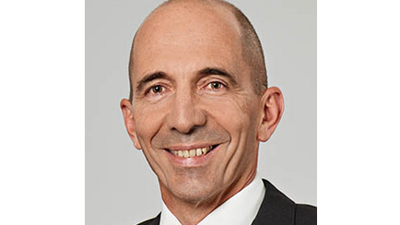Statement by Prof. Götz T. Gresser

Goetz T. Gresser (Source: DITF)
The world economy is facing turbulent times. Being globally connected this also impacts the textile industry. During the last 2 years our industry has been through different crises – caused by the Covid pandemic – starting a recovery, and now as a result of the war in the Ukraine, energy price peak, inflationary pressures and a decrease in consumer confidence. We asked different stakeholders in our industry the question: “What are the 5 biggest challenges in the textile industry for 2023?” In his statement of Prof. Götz T. Gresser, Chariman of the Executive Board of the German Institutes of Textile and Fiber Research Denkendorf (DITF), Denkendorf/Germany, gives us his assessment:
Sustainability and climate protection
Climate change affects us all and time is slipping through our fingers. A lot has happened in the textile industry in recent years, but there are still many tasks ahead. The current energy crisis can become a driving force and stimulus here. We are actively facing this challenge at the DITF. We intend not only to achieve the climate goals of the state of Baden-Württemberg and become climate-neutral by 2030, but also to drastically reduce our energy and heat requirements while generating considerable energy and heat ourselves. To this end, the DITF will make extensive investments in the coming years.
Recycling gap from end-of-life product to spinnable fiber
Worldwide, not even 10% of all raw materials are recycled. The goal is to turn the textile end product back into a spinnable fiber. If we look closely, recycled polyester for clothing is currently often obtained not from a textile, but from bottle flakes - in other words, from a different cycle. The material mixtures from which textiles are made are problematic. These cannot always be separated into their components. This is precisely where there is still a great need for action in new process technologies that close the last "gap" in the circular economy. In addition, care must be taken to use fewer and single-variety materials in production.
Shortage of skilled workers
Textile is a cross-sectional technology that we find in all application industries. The textile industry is in a constant and successful transformation process. We have to show our successes in order to attract skilled workers, students and trainees. In addition, professions in the textile industry and in textile research must become more attractive in order to compete for skilled workers. Modern technologies, amazing innovations, digitalization, a sustainable image, work-life balance are the keywords. Here, some textile companies and research institutions are already breaking new ground and their success proves them right. We have to inspire people with our work.
Climate change affects us all and time is slipping through our fingers. A lot has happened in the textile industry in recent years, but there are still many tasks ahead. The current energy crisis can become a driving force and stimulus here. We are actively facing this challenge at the DITF. We intend not only to achieve the climate goals of the state of Baden-Württemberg and become climate-neutral by 2030, but also to drastically reduce our energy and heat requirements while generating considerable energy and heat ourselves. To this end, the DITF will make extensive investments in the coming years.
Recycling gap from end-of-life product to spinnable fiber
Worldwide, not even 10% of all raw materials are recycled. The goal is to turn the textile end product back into a spinnable fiber. If we look closely, recycled polyester for clothing is currently often obtained not from a textile, but from bottle flakes - in other words, from a different cycle. The material mixtures from which textiles are made are problematic. These cannot always be separated into their components. This is precisely where there is still a great need for action in new process technologies that close the last "gap" in the circular economy. In addition, care must be taken to use fewer and single-variety materials in production.
Shortage of skilled workers
Textile is a cross-sectional technology that we find in all application industries. The textile industry is in a constant and successful transformation process. We have to show our successes in order to attract skilled workers, students and trainees. In addition, professions in the textile industry and in textile research must become more attractive in order to compete for skilled workers. Modern technologies, amazing innovations, digitalization, a sustainable image, work-life balance are the keywords. Here, some textile companies and research institutions are already breaking new ground and their success proves them right. We have to inspire people with our work.
Traceability
Traceability is the basis for sustainable production and the circular economy. Reliable product data ensure safety and transparency, the importance of which will grow in the future. This transparency is made possible by comprehensive digitalization of the entire value chain. Technologies such as blockchain technologies help companies to collect, analyze and make available the relevant data.
Supply chain and raw material issues
Supply chain problems also mean a real loss of value for the textile industry. Raw materials, primary products or spare parts are scarce and expensive. If deliveries fail at short notice, this presents companies with major problems. Flexibility is needed: to produce smaller batches economically and to use raw materials for versatile applications, as well as to find new sources of supply in Europe. Here, too, the digital tools used in Traceability can help.



